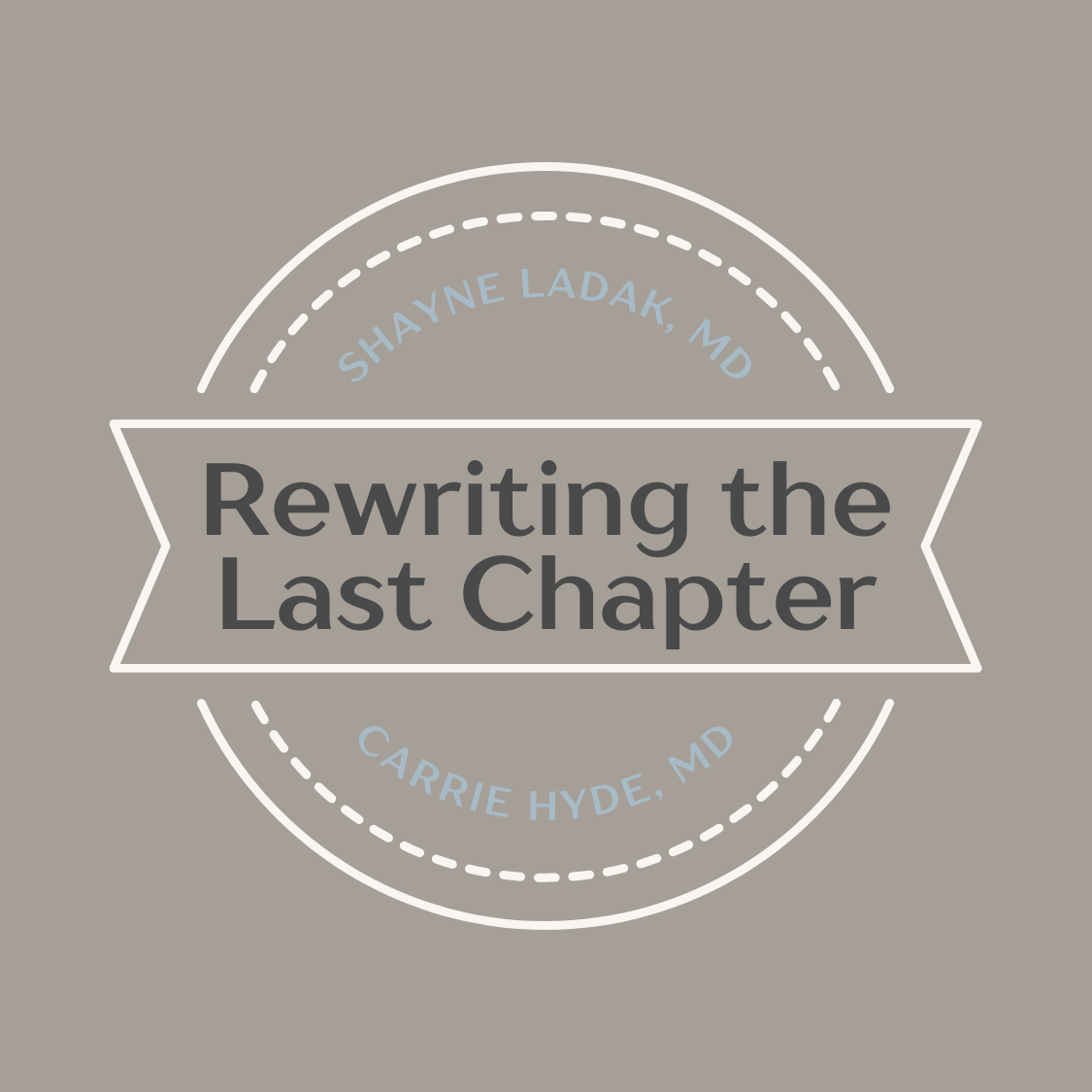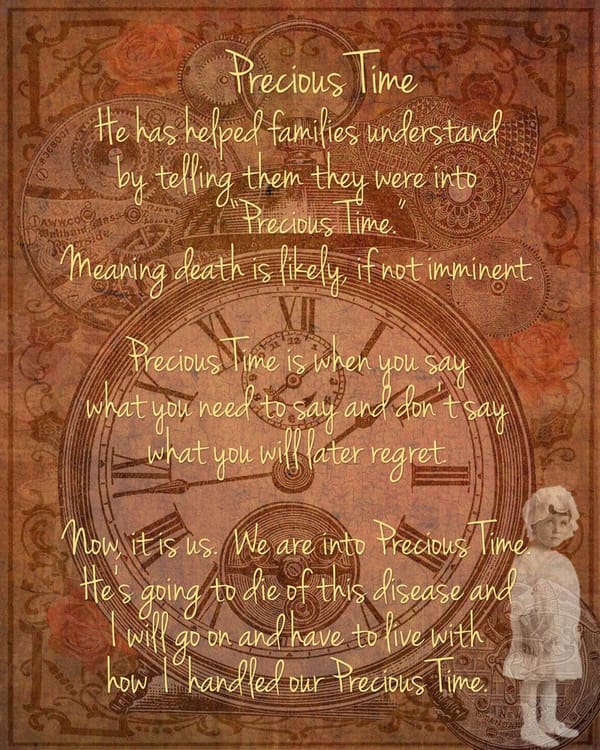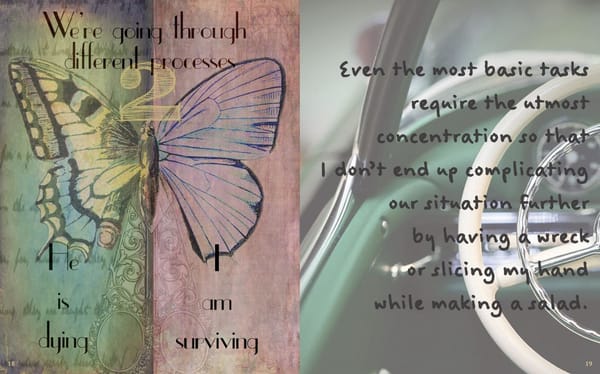Caring for the Aging Patient with Down Syndrome: A Palliative and Hospice Perspective

October is Down Syndrome Awareness Month—a time to celebrate the lives, stories, and strengths of individuals with Down syndrome and the families who love and support them. It's a moment to pause, learn, and reflect on what it truly means to be inclusive, to embrace diversity in all forms, and to recognize the extraordinary potential within every person. Whether you're a parent, friend, educator, healthcare provider, or simply someone who wants to better understand this vibrant and resilient community, this month offers an opportunity to deepen empathy and challenge outdated stereotypes. In this post, we’ll explore the facts, debunk the myths, and share voices that shine a light on the beauty and dignity of life with Down syndrome.
Caring for the Aging Patient with Down Syndrome: A Palliative and Hospice Perspective
As individuals with Down syndrome live longer lives than ever before—thanks to advancements in medical care, early interventions, and community support—a growing number are reaching their senior years and presenting unique challenges to hospice and palliative care providers. It is estimated that life expectancy for people with Down syndrome now exceeds 60 years, a striking increase from previous generations. However, with this longevity comes a heightened vulnerability that demands an informed, compassionate, and individualized approach from healthcare professionals tasked with providing end-of-life care.
This blog post aims to deepen the understanding of hospice and palliative care clinicians regarding the multifaceted vulnerabilities of geriatric patients with Down syndrome. It outlines key medical, psychological, social, and ethical considerations that should guide their care and support throughout the terminal phase of life.
Accelerated Aging and Early-Onset Dementia
Perhaps the most well-known and clinically significant vulnerability in aging individuals with Down syndrome is their markedly increased risk of early-onset Alzheimer’s disease. Due to the triplication of the amyloid precursor protein (APP) gene on chromosome 21, virtually all adults with Down syndrome exhibit the neuropathological hallmarks of Alzheimer’s by age 40, with a majority showing clinical signs by their early 50s. This neurodegeneration results in progressive memory loss, behavioral changes, loss of communication skills, and ultimately total functional dependence.
For hospice and palliative professionals, this means that cognitive impairment often coexists with end-of-life care needs. Families and caregivers may not fully grasp that their loved one is not only aging but also experiencing dementia. Effective care involves both education and symptom management—anticipating behaviors such as wandering, agitation, or dysphagia and addressing them with nonpharmacological and supportive strategies.
Chronic Medical Comorbidities
People with Down syndrome are predisposed to a variety of lifelong medical conditions, many of which complicate palliative management. These include:
- Congenital heart defects, especially atrioventricular septal defects
- Hypothyroidism (which may present subtly in advanced disease)
- Obstructive sleep apnea, often underdiagnosed or untreated
- Type 2 diabetes and obesity
- Gastrointestinal conditions, including celiac disease
- Leukemia (in childhood) and testicular cancer (in adults)
- Osteoporosis and early-onset arthritis
The presence of multiple comorbidities increases frailty, complicates medication management, and amplifies the risk of acute decompensation. Hospice providers must adopt a holistic and proactive symptom management strategy, considering the cumulative burden of disease and the risks of overtreatment.
Sensory Impairments and Communication Challenges
As patients age, preexisting sensory impairments (hearing and vision loss) may worsen and exacerbate isolation, confusion, or behavior changes. These impairments, when coupled with intellectual disability and early dementia, can lead to the underrecognition of pain or distress.
Clinicians should incorporate specialized pain assessment tools designed for patients with intellectual and communication disabilities, such as the DisDAT (Disability Distress Assessment Tool) or Abbey Pain Scale. Staff should also rely on nonverbal cues and enlist the help of long-term caregivers who know the patient’s baseline behaviors.
Intellectual Disability and Advocacy
Most individuals with Down syndrome have mild to moderate intellectual disability and require support for medical decision-making throughout their lives. In older adulthood, this frequently means that a parent, sibling, or legal guardian is involved in decisions about care planning, advance directives, and consent. It is essential that hospice teams identify and involve the appropriate surrogate decision-maker early in the admission process.
Whenever possible, the person with Down syndrome should still be included in discussions at a level they can understand. Use simple language, visual aids, and repetition to empower participation and uphold dignity.
Functional Decline and Frailty
Hypotonia, joint laxity, obesity, and limited mobility contribute to early frailty in this population. Many geriatric patients with Down syndrome become bedbound, incontinent, and dependent for all ADLs well before their neurotypical peers. Dysphagia is common, and aspiration pneumonia is a leading cause of death.
Nutrition and hydration decisions should be guided by goals of care, prioritizing comfort and ease. Providers must navigate family expectations around feeding tubes and nutritional supplements with empathy and clinical clarity, emphasizing the risks of interventions in advanced dementia and the natural decline in appetite as part of the dying process.
Social Isolation and Grief
Many adults with Down syndrome live in group homes or long-term care settings. Others may have outlived their primary caregivers, particularly parents, and been placed in unfamiliar environments where they are vulnerable to loneliness and depression. Transitions in residence or the death of close companions can be deeply destabilizing.
Hospice teams should support continuity in caregivers, preserve comforting routines, and engage chaplains or counselors trained in intellectual disability. Involving known staff and providing familiar objects or music can significantly reduce distress.
Risk of Abuse and Neglect
Due to cognitive and communication impairments, as well as dependence on others for personal care, geriatric patients with Down syndrome are at increased risk for abuse and neglect. Hospice teams must remain vigilant for signs of mistreatment, including unexplained injuries, sudden behavior changes, or poor hygiene. Establishing trusting relationships with caregivers while also monitoring for safeguarding concerns is a delicate but essential balance.
Medication Sensitivities and Polypharmacy
Polypharmacy is common in older adults with Down syndrome, particularly those with overlapping behavioral symptoms and chronic conditions. They may be unusually sensitive to anticholinergic side effects, sedatives, or antipsychotic medications. Regular medication reconciliation is vital, with a focus on deprescribing unnecessary or burdensome treatments in favor of comfort-oriented regimens.
Particular caution should be exercised when using opioids, benzodiazepines, or neuroleptics, as these can exacerbate confusion, falls, or respiratory compromise in frail patients.
Interdisciplinary Team Engagement
Optimal care for aging patients with Down syndrome is multidisciplinary. Hospice physicians, nurses, social workers, chaplains, CNAs, music therapists, and direct support professionals should collaborate frequently, share observations, and adjust care plans as the patient's condition evolves. Respect for the patient’s history, preferences, and daily rhythms should remain central.
Conclusion
The geriatric patient with Down syndrome embodies both vulnerability and resilience. As their health declines, they deserve care that recognizes the totality of their life—honoring their individuality, preserving dignity, and easing suffering. For hospice and palliative care professionals, this means understanding the unique clinical syndromes associated with Down syndrome, embracing inclusive communication strategies, and partnering with long-term caregivers and families to ensure compassionate, personalized end-of-life care.
In doing so, we not only serve the needs of a medically complex population, but we affirm their humanity at a time when dignity matters most.
References
Rafii, M.S. and Fortea, J., 2023. Down syndrome in a new era for Alzheimer disease. Jama, 330(22), pp.2157-2158.
Dimopoulos, K., Constantine, A., Clift, P., Condliffe, R., Moledina, S., Jansen, K., Inuzuka, R., Veldtman, G.R., Cua, C.L., Tay, E.L.W. and Opotowsky, A.R., 2023. Cardiovascular complications of down syndrome: scoping review and expert consensus. Circulation, 147(5), pp.425-441.
Morley, J.E., 2022. The older patient with Down syndrome. Pathy's Principles and Practice of Geriatric Medicine, 2, pp.934-939.
Hefti, E. and Blanco, J.G., 2017. Pharmacotherapeutic considerations for individuals with Down syndrome. Pharmacotherapy: The Journal of Human Pharmacology and Drug Therapy, 37(2), pp.214-220.
Hodapp, R.M., Burke, M.M., Finley, C.I. and Urbano, R.C., 2016. Family caregiving of aging adults with Down syndrome. Journal of Policy and Practice in Intellectual Disabilities, 13(2), pp.181-189.
Carfì, A., Romano, A., Zaccaria, G., Villani, E.R., Manes Gravina, E., Vetrano, D.L., Bernabei, R. and Onder, G., 2020. The burden of chronic disease, multimorbidity, and polypharmacy in adults with Down syndrome. American Journal of Medical Genetics Part A, 182(7), pp.1735-1743.





